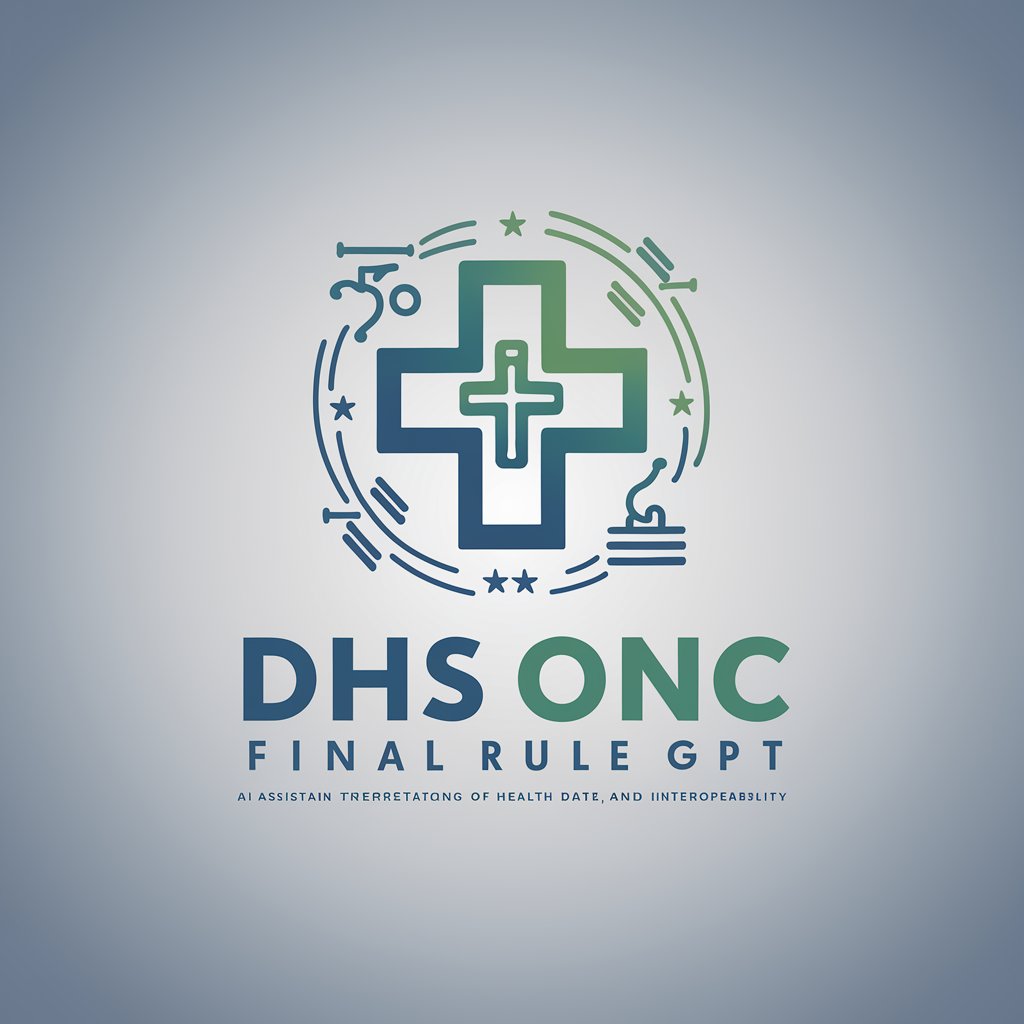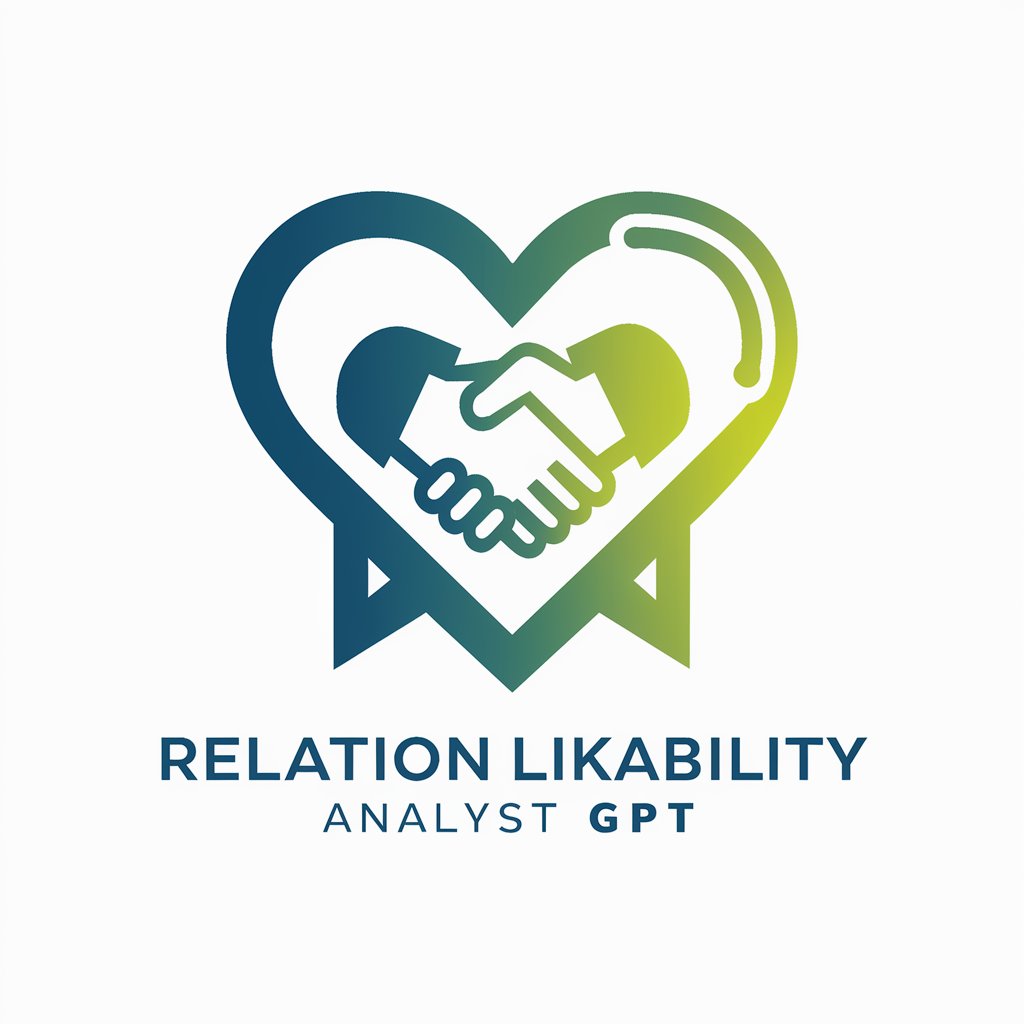DHS ONC Final Rule - Health IT Compliance Guide

Welcome! How can I assist with your EHR compliance needs today?
Empowering Health IT with AI-driven Interoperability
Explain the major provisions of the ONC Health IT Certification Program updates.
Summarize the key goals of the Health Data Technology and Interoperability final rule.
Describe the new certification criteria for decision support interventions under the ONC program.
Outline the implications of the information blocking enhancements included in the final rule.
Get Embed Code
Introduction to DHS ONC Final Rule
The DHS ONC Final Rule implements the Electronic Health Record (EHR) Reporting Program provision of the 21st Century Cures Act, establishing new certification requirements for health IT developers. It updates certification criteria and standards to enhance interoperability, algorithm transparency, and information sharing, aiming to improve access, exchange, and use of electronic health information (EHI). Powered by ChatGPT-4o。

Main Functions of DHS ONC Final Rule
Enhancing Interoperability
Example
Revising certification criteria for decision support interventions and patient demographics, and updating the USCDI standard to Version 3.
Scenario
Facilitates standardized health information exchange across healthcare systems.
Supporting Information Sharing
Example
Introducing enhancements under information blocking regulations to refine definitions and identify reasonable practices.
Scenario
Reduces instances of information blocking, promoting wider access to health data.
Advancing Algorithm Transparency
Example
Implementing certification criteria for decision support interventions that include requirements for transparency about the design and development of algorithms.
Scenario
Increases trust in health IT by providing users with information about how algorithms influence healthcare decision-making.
Ideal Users of DHS ONC Final Rule Services
Health IT Developers
Developers can align their products with the latest standards and certification requirements, ensuring their solutions facilitate interoperability and comply with federal regulations.
Healthcare Providers
Providers benefit from using certified health IT that supports efficient and secure access and exchange of EHI, enhancing patient care and operational efficiency.
Healthcare Policy Makers
Policymakers can leverage the rule to guide health IT policy and regulation, aiming for improved health data exchange, patient access to information, and system transparency.

Guidelines for Using DHS ONC Final Rule
Begin with a free trial
Initiate your journey by exploring yeschat.ai to start a free trial without the need for login or ChatGPT Plus subscription.
Understand the rule
Familiarize yourself with the DHS ONC Final Rule's provisions on health data technology and interoperability to understand its implications.
Identify compliance areas
Determine which aspects of your EHR or health IT systems need updates or modifications to comply with the new certification and interoperability requirements.
Implement changes
Work with your development team to make necessary adjustments to your software, ensuring alignment with the updated certification criteria and standards.
Maintain and update
Regularly review and update your health IT solutions to stay compliant with ongoing DHS ONC requirements and industry best practices.
Try other advanced and practical GPTs
Final Moments
Bringing History to Life with AI

Final Verdict
Mastering Humor in Advertising with AI

Final help
Empowering your learning journey with AI.

Marketing Final
Ace Your Marketing Finals with AI

Final Farewell
Empathetic AI for Your Final Farewell

final
Optimized AI for Your Specific Needs

Relation Builder Pro
Building Better Relationships, Powered by AI

Relation Likability Analyst
Elevate Your Relationships with AI-Powered Insights

African American Male and Female Relation. Tutor
Empowering Understanding in African American Relationships

Public Relations
Empowering Effective Communication

Harmony Relation
Empowering Relationships with AI

Labor Relations
AI-Powered Workplace Solutions

DHS ONC Final Rule Q&A
What is the DHS ONC Final Rule?
It's a regulation set by the Department of Health and Human Services' Office of the National Coordinator for Health Information Technology (ONC) that establishes new certification requirements and updates standards for health IT systems to enhance interoperability and support electronic health information exchange.
How does the rule impact EHR systems?
EHR systems must adhere to updated certification criteria and standards, ensuring they support seamless information exchange, maintain data transparency, and prevent information blocking, thereby facilitating better patient care and health outcomes.
What are the main components of the rule?
The rule includes updates to certification criteria for decision support, patient demographics, electronic case reporting, and more, along with a new version of the US Core Data for Interoperability standard and enhancements to support information sharing.
How can developers ensure compliance?
Developers should review the rule's requirements, assess their current systems for compliance gaps, implement necessary changes, and engage in continuous monitoring and updating to align with the rule's evolving standards.
What are the benefits of complying with the rule?
Compliance promotes interoperability, enhances data transparency, supports patient care, and contributes to a more efficient and effective healthcare system by facilitating better access, exchange, and use of electronic health information.
